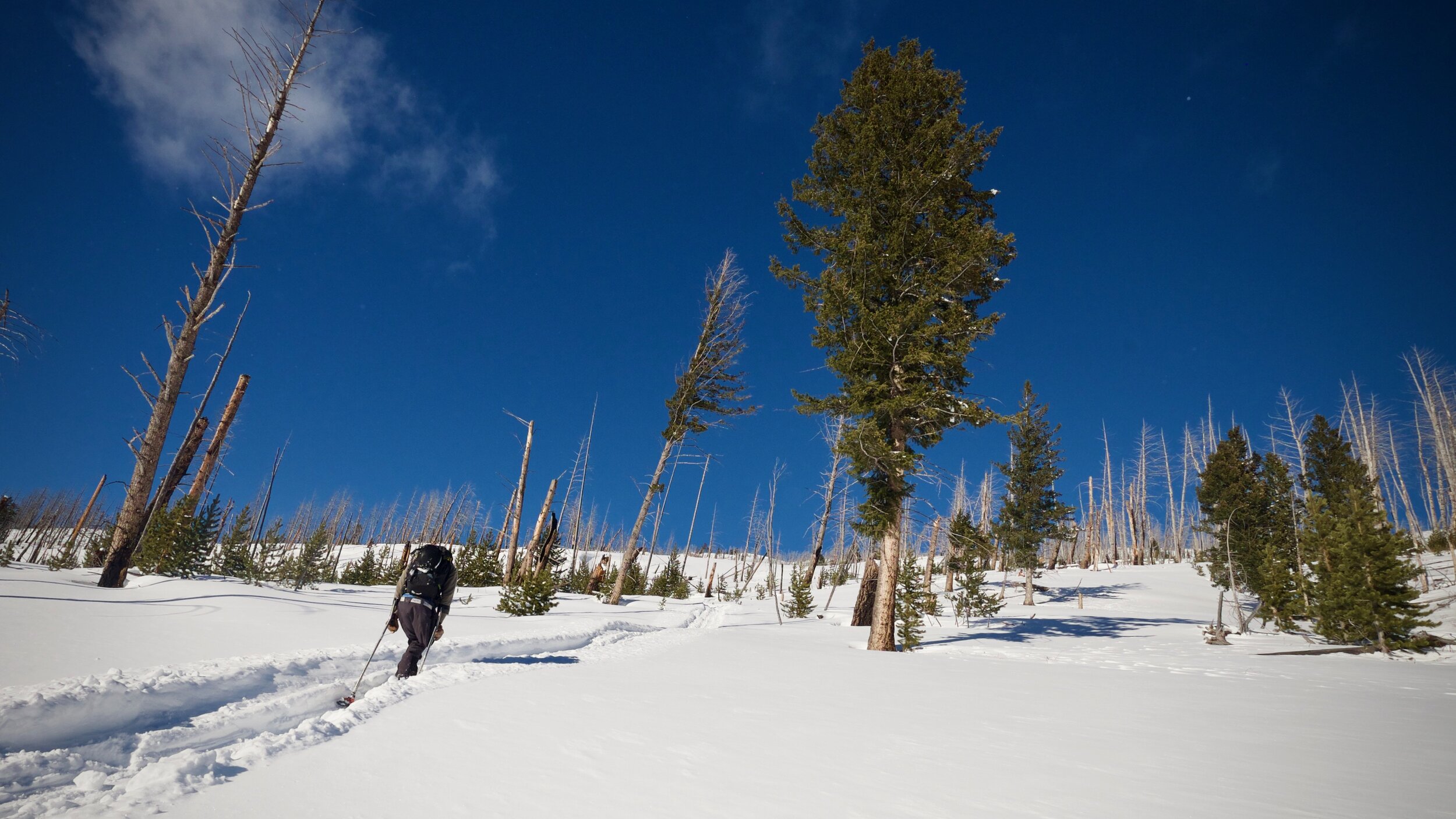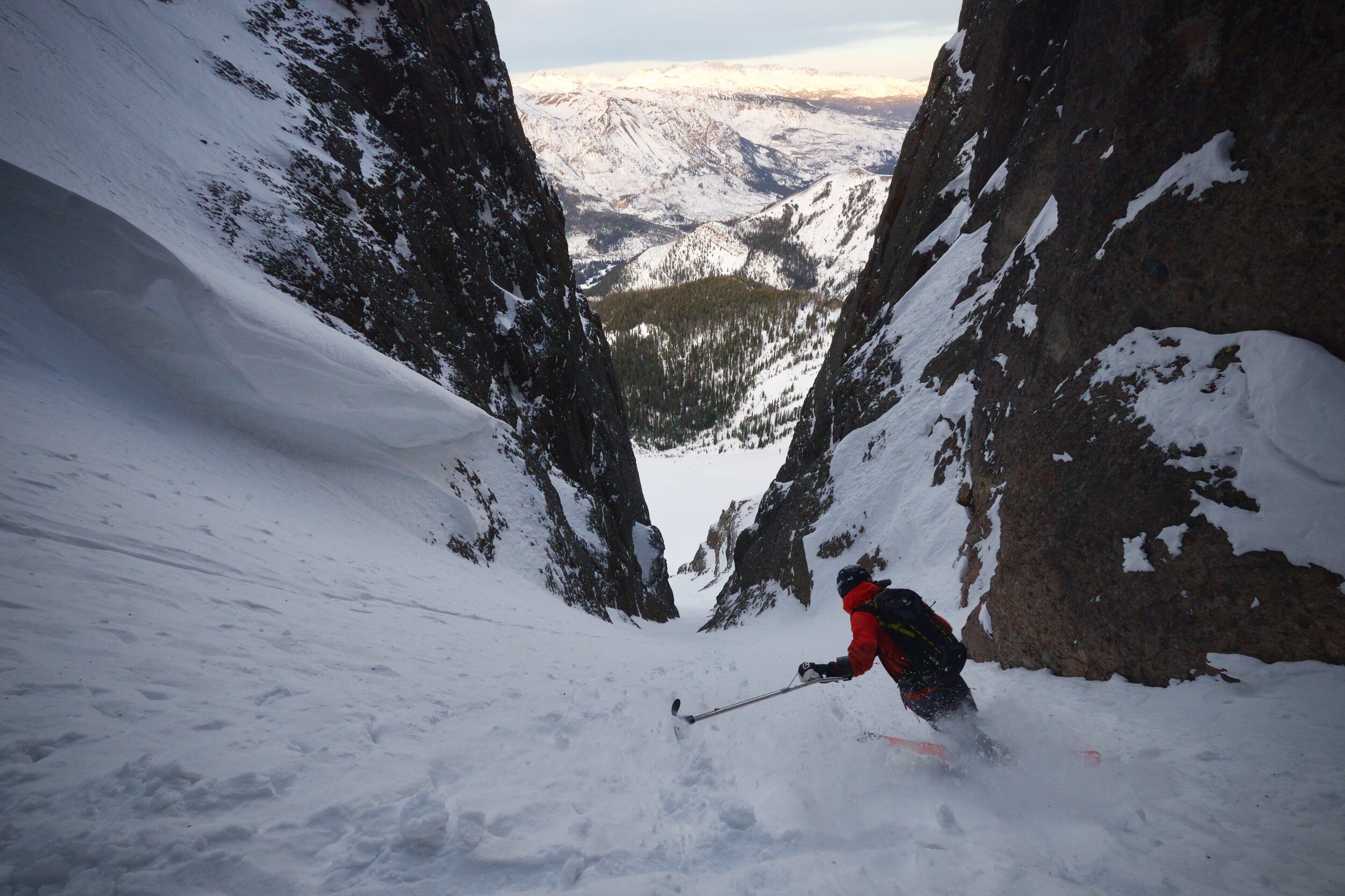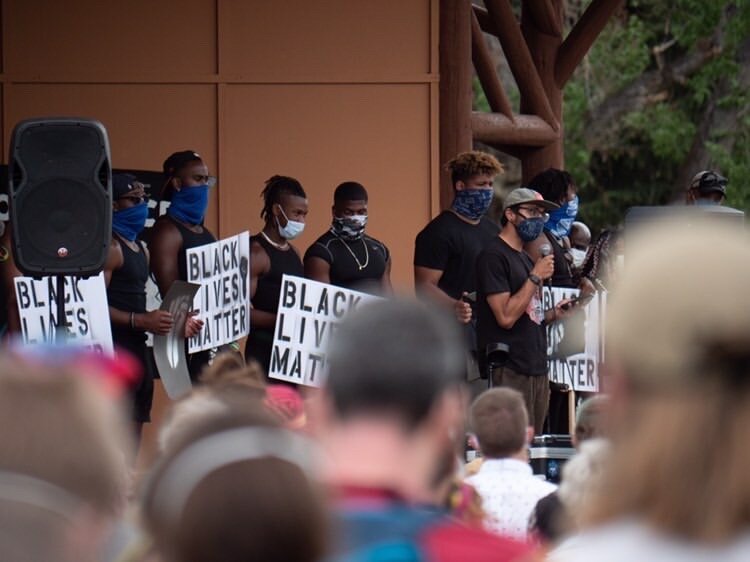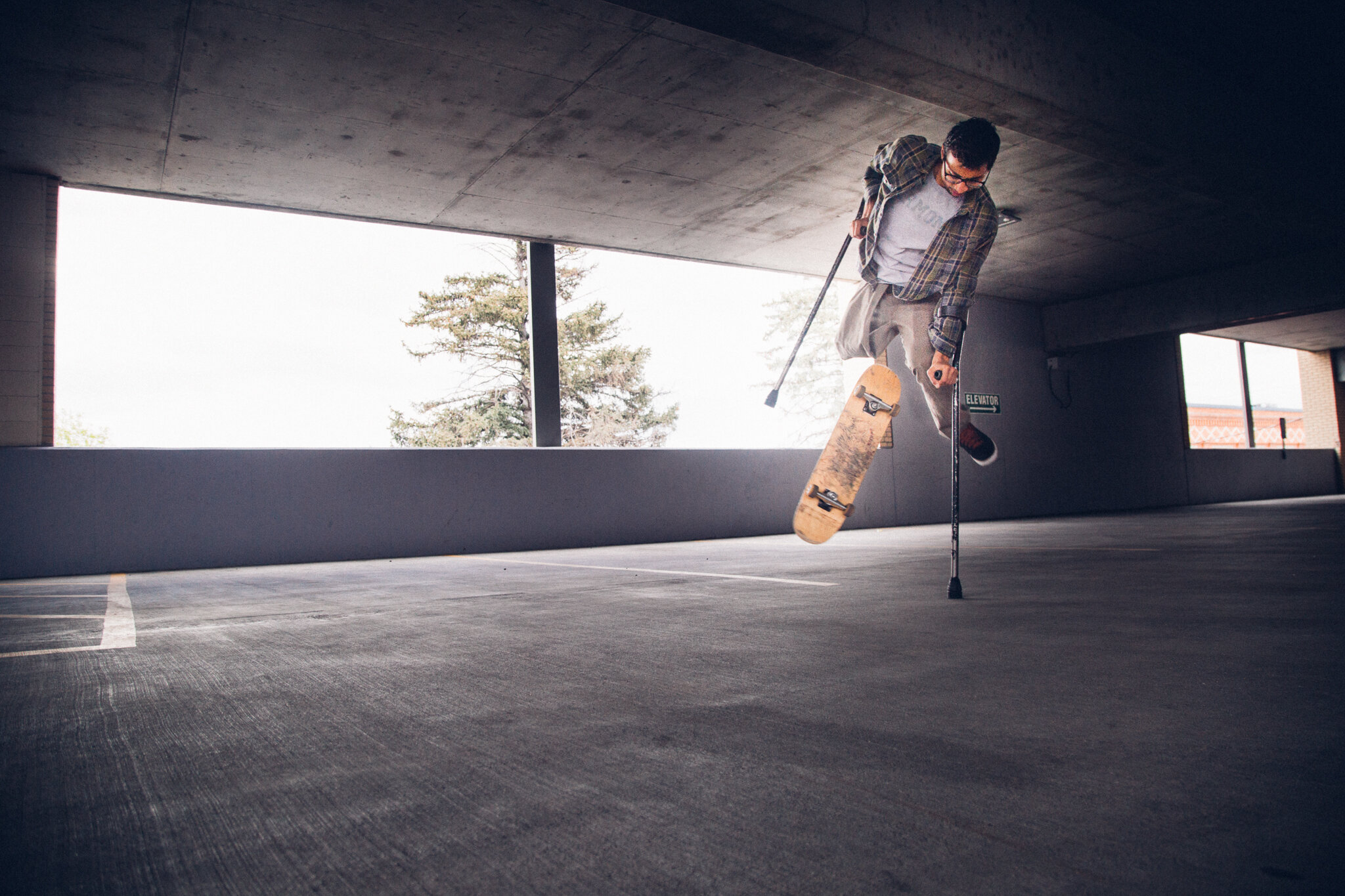Vasu Sojitra: “Ninjasticking through the woods to bring intersectionality to the outdoors.”
Vasu Sojitra is a professional adaptive skier who lives in Bozeman, Montana. As an Indian-American, Vasu advocates for those who are historically marginalized. When Vasu was nine months old, he was diagnosed with septicemia, resulting in the amputation of one of his legs. Vasu continues to challenge the biases that go with being a person of color with a disability through his intersectional work which includes being the first adaptive athlete for The North Face, an advisor for The Outdoor F.U.T.U.R.E Initiative, the co-founder of Inclusive Outdoors Project, and a Diversity, Equity, and Inclusion (DEI) strategist for In Solidarity Network and independently.
Tell us a little bit about yourself! (name, disability, age, nationality)
My name is Vasu Sojitra, and I go by the pronouns he/him/his. I am on the lands of the Crow, Northern Cheyenne, Salish Kootenai, Shoshone-Bannock, Blackfeet and many others that call Bozeman, Montana home. Those are the native communities that are part of these lands.
I’m a professional athlete and also a diversity and inclusion strategist, primarily with the outdoor industry. I’m also an adaptive athlete as I identify myself as a disabled person of color. I have a limb difference disability that resulted in the amputation of my right leg. I am Indian-American and have been living in the US for pretty much all my life. For five years of my childhood, I lived in Gujarat, India.
I go by the motto, “Ninjasticking through the woods to bring intersectionality to the outdoors.” Ninjasticking is my way of reframing what disability looks like in our society since there is a lot of stigma around disability, making people pity us or devaluing our perspectives. Ninjasticking is a fun way to bring levity to such a serious topic. Intersectionality is a theory based around races and other social identifiers (gender, sexual orientation, immigration status); all of these come with their privileges and oppressive ideas.
What was it like having a different cultural background compared to those around you growing up? What is the disability community like in India?
That was an interesting part of my childhood and has still been. I lived in India from the ages of 2 to 7, and I was able to fit in with my skin tone, ethnicity, race, and religion. However, disability there is really looked down on, similar to other countries. In India, it’s based on a caste system, which is illegal now, but it’s still a systemically an issue of how people treat each other. As a disabled person, I was looked down on primarily because of the reincarnation cycle in the caste system within Hindu culture. It’s very much dehumanizing. People are institutionalized. People are injured or killed just from having a disability.
Coming to the states, I moved to a primarily white town in Connecticut. I was one of the only brown kids and one of the only kids with a disability. Many people don’t acknowledge a lot of these things in the US, with race, gender, disability. Therefore, people didn’t know how to treat me, and I definitely felt excluded in that sense.
When did you start skiing, and what inspired you to?
I started skiing when I was 10. I stopped using my prosthetic leg when I was going through a traumatic experience in class where it didn’t buckle on me. I started using crutches from there on and then. From that, I kind of got into skateboarding after watching X-games and movies. Once winter came around, I wanted to go snowboarding just because my brother wanted to snowboard. It didn’t really seem logical to snowboard with one leg, so I decided to ski instead. It was kind of a serendipitous moment after I got out of a ski school lesson where they didn’t know how to teach me. Another guy who was skiing with one leg came up to me and said, “Hey, you got this.” and skied off. He’s very much an intermediate skier in hindsight, but at the time, I was ten years old and saw him rip away and thought wow, this is really cool. I started looking into the internet about what Paralympic skiing was and saw a massive world around adaptive sports that doesn’t get highlighted in the outdoor industry. I then went to college in Vermont, which is also near a bunch of ski hills that are very accessible. I got into backcountry skiing with the help of my friends, helping me develop a little attachment for the bottom of my ski crutches, or what I like to call them–ninja sticks. It snowballed into what it is today.
How has skiing changed the way you live your life? What about it do you love so much?
Skiing comes with its own community, its own little language, its own little culture, its only little nuances. That’s where I first started finding a sense of community within the ski world. Unfortunately, a lot of the community was still homogenous: fairly white, non-disabled, and straight. They were still very inclusive and helped me out whenever I needed them. I also started working at Vermont Adaptive, where I was on a budget lesson, helping other folks with disabilities go out skiing and support them. There was one lesson where this kid who has down syndrome was skiing down this really easy run, and he was having the time of his life. Another skier was tethering him, so he wouldn’t lose control. That’s when I started noticing this isn’t really about skiing. This is about the feeling we get from activities like skiing. It doesn’t matter what the sport is. It makes us feel that sense of joy and connection to both the land, community, and people and a way of stepping away from many of the issues we, as marginalized folks, run into society. I always like to say, “The best skier on the mountain is having the most fun.”
It doesn’t matter about our abilities. It’s about how we perceive our abilities.



Talk about your skiing accomplishments!
I started skiing in Connecticut, went to Vermont, and skied a bunch of backcountry terrain
I skied a ton in Northern Quebec in Chic-Choc, (northern tip of the appellation mountain in North America)
I came out to Bozeman, Montana, and skied a lot of different well-known lines to the local community here.
I climbed Grand Teton in Grand Teton National Park.
I also climbed Granite Peak, which is the tallest mountain in Montana.
I really focus on pushing my limits, seeing what I’m capable of, not based on other people’s value of me and my body.
What does your skiing schedule look like? How often do you ski?
I typically ski four days a week, but the ski area is closed right now, so I’m trying to get out as much as possible, maybe 2-3 times a week. A lot of it is backcountry skiing, touring, hiking, skiing up, and skiing down. I also do a lot of week-long projects. My schedule is all over the place, and it depends on snowpack and avalanche.
What have you noticed about diversity (in terms of race) in outdoor sports?
Specifically, in the United States, they’re finally reconciling the issues that are happening within the outdoor industry around race. They are having a really hard time with a disability, though, at least from how I’m seeing it. There has been a lot of advocates around race, which is awesome to see. Many Black Americans, Asian Americans, Indigenous folks, African Americans, and the Hispanic-Latino population are slowly being represented the way they prefer to in outdoor spaces. This is not about getting out and being the most rad person possible, but this is really about incorporating our culture into what the outdoor really means to us. Of course, it has to continue to happen; it’s not just one and done to create a cohesive industry and environment for everyone.
What still needs to be done in the field of accessibility in outdoor sports?
A lot of it is based on representation. There are hundreds of organizations in North America working with disabled communities to provide access to the outdoors in various ways, whether that be skiing, hiking, climbing, cycling, you name it. But a lot of that isn’t getting publicized and shared in mainstream media, so not everyone sees how impactful the adaptive sports industry is in the United States. First and foremost is building that bridge between the massive adaptive sports industry and the outdoor industry, which will take time based on a lot of partnerships, a lot of conversations, marketing, content, and leadership structure. A lot of individuals in these industries don’t really interact with disabled communities or know how to. Therefore, providing that educational platform for people to start reframing what disability looks like is essential because disability is not a bad thing. It’s the barriers that we have to come across that are the bad things. Currently, the outdoor industry is creating more and more barriers for us to represent our narratives and our stories the way we want to. It’s important to destigmatize and break down some of these biases that come with that, and I think that comes a lot with expanding that narrative and genuine storytelling.
What projects are you working on as a DEI strategist, co-founder of Inclusive Outdoors Project, and Outdoor Future Initiative project?
As an athlete, I’m part of several projects. With North Face, we’re producing a film that we just shot several weeks ago on Mount Moran, so hopefully, that’d be coming out in the fall. I’m also taking part in a film with a cool group of folks, primarily women of color, called the Approach Film. It’s a cool take on how each individual approaches a certain challenge and what kind of support each of them needs. I’m also working with Skull Candy’s Boundary Breakers, their athlete ambassador team, to expand that narrative of these conversations around disability. More on the inclusive outdoor side, we’re trying to run different kinds of programming based on different identities, so I hope to run some rock climbing clinics this summer for the adaptive community, queer community, and the community of color. I’m also taking part in the Outdoor Future Initiative, which is more of a policy-oriented organization to reallocate funding towards projects like the Inclusive Outdoors Project and other projects working with underrepresented communities.
What are your current goals (short-term and long-term)?
Continue to humanize and normalize a lot of what disability and race look like. Break down a lot of these stereotypes and biases that come with a lot of these identities. I think that’s what’s causing a lot of the violence in the US. I think the outdoor industry is starting to realize the connection between the narratives they’re trying to share and the narratives that the US is trying to hold on to, whether it be a lot of the racist rhetoric that’s happening around the previous President or prior to a lot of the acknowledgment around enslavement and genocide. Just trying to make sure that we are learning together and holding ourselves to these issues, and reconciling a lot of those issues and relationships to move forward together in a healing process by breaking down those stereotypes.
To learn more about Vasu and his work, visit:
Vasu’s website: http://www.vasusojitra.com/
Vasu’s Instagram: https://www.instagram.com/vasu_sojitra/
Vasu’ feature on The North Face: https://www.thenorthface.com/about-us/athletes/vasu-sojitra.html
Vasu’s Ted Talk: https://youtu.be/WZsebbAoJMQ
Inclusive Outdoors Project: https://www.inclusiveoutdoorsproject.com/
The Outdoor F.U.T.U.R.E Initiative: https://outdoorfuture.org/





